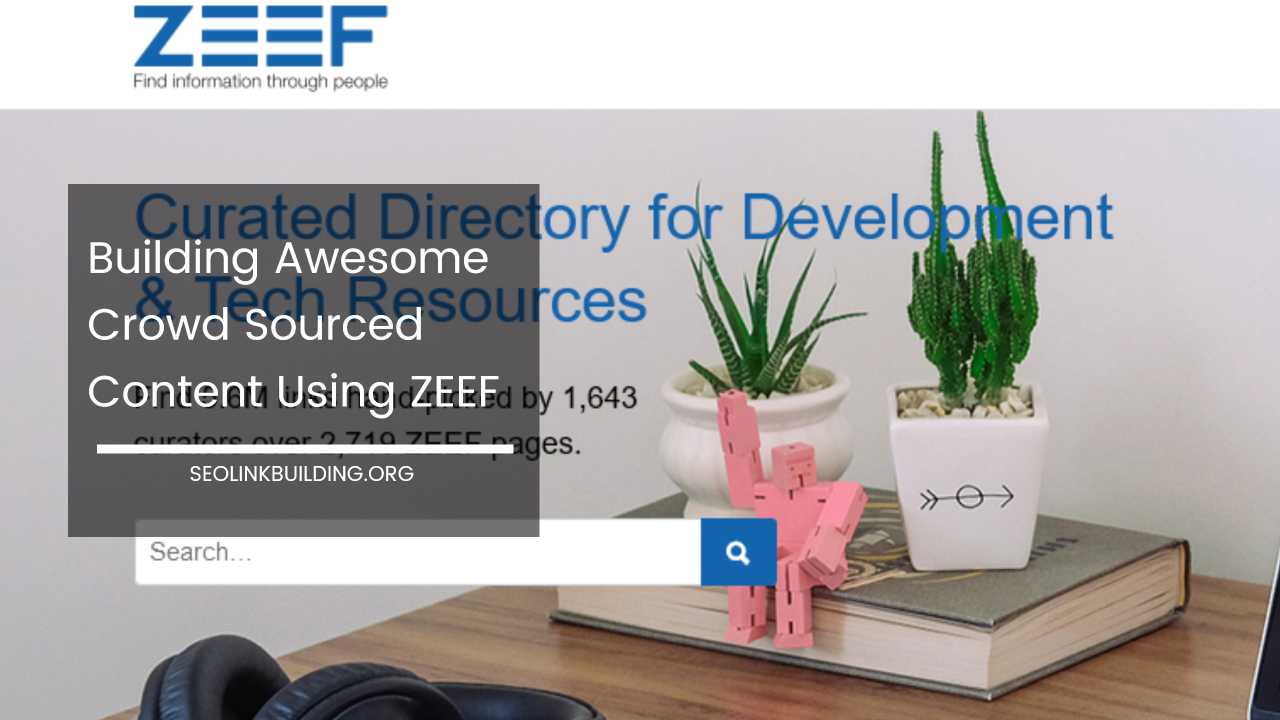Content Hubs for SEO: How to Get More Traffic and Links With Topic Clusters

Content Hubs for SEO
Content Hubs for SEO: How to Drive More Traffic and Earn Quality Links with Topic Clusters
In today’s fiercely competitive digital landscape, creating high-quality content alone is not enough to achieve standout SEO results.
The internet is brimming with information, making it increasingly difficult for individual pieces of content to capture attention and rank well in search engine results.
To rise above the noise, leveraging a structured approach like content hubs—often referred to as topic clusters—can be a game-changer.
This strategy involves organizing your content around central themes or topics, thereby enhancing your website’s visibility, increasing organic traffic, and securing valuable backlinks.
Understanding Topic Clusters
A topic cluster is a strategic content organization method that groups related content around a central pillar topic.
This pillar content is a comprehensive, authoritative resource that covers the main subject in detail. Surrounding this pillar are cluster content pieces that delve into specific subtopics or related themes.
The Structure of Topic Clusters
- Pillar Content: This is a broad, extensive piece of content that provides a thorough overview of a main topic. For example, if your website focuses on digital marketing, a pillar article might be “The Ultimate Guide to Digital Marketing.” This content should be substantial, providing value and insight into all facets of digital marketing.
- Cluster Content: These are individual articles or blog posts that address specific subtopics related to the pillar content. Using the same example, cluster content could include articles on “Social Media Marketing Strategies,” “SEO Best Practices,” and “Email Marketing Tips.” Each of these pieces links back to the pillar content and to each other.
- Internal Linking: This is a crucial element of topic clusters. Internal links connect the pillar content to the cluster content, helping search engines understand the structure of your site and the relevance of your content. It also aids users in navigating your site, allowing them to easily explore related topics.
Benefits of Using Topic Clusters
Implementing a topic cluster strategy can offer numerous benefits for your SEO efforts:
- Enhanced SEO Performance: Topic clusters help search engines understand the context and relevance of your content. When search engines see a well-organized structure with a central pillar and related cluster content, they recognize your site as a valuable resource on a particular topic, which can improve your search rankings.
- Increased Organic Traffic: By grouping related content together, users can more easily find the information they are looking for. This improved navigation can lead to increased traffic as visitors explore multiple pages and spend more time on your site.
- Improved User Experience: Topic clusters create a more intuitive browsing experience. Visitors can access related articles and resources easily, which keeps them engaged and reduces bounce rates. An organized content structure makes it easier for users to find answers to their questions and discover additional relevant information.
- Stronger Backlink Acquisition: High-quality content organized into topic clusters provides value that other websites are more likely to reference and link to. This can result in increased backlinks, which are crucial for improving your site’s authority and search engine rankings.
Creating Effective Topic Clusters
To implement a successful topic cluster strategy, follow these detailed steps:
- Identify Your Pillar Content:
- Research Your Audience: Start by understanding what topics your target audience is interested in. Use tools like Google Analytics, keyword research tools, and social media insights to identify key areas of interest.
- Choose a Broad Topic: Select a topic that is both relevant to your audience and aligned with your business goals. The topic should be broad enough to cover various subtopics but specific enough to target a defined audience.
- Create Comprehensive Content: Develop a pillar content piece that provides a thorough overview of the chosen topic. This content should be informative, well-researched, and engaging, serving as a go-to resource for readers.
- Research Subtopics:
- Identify Related Themes: Break down your main topic into specific subtopics or related themes. Use keyword research tools to find popular search queries and related topics that can be addressed in your cluster content.
- Analyze Competitors: Look at what your competitors are doing in terms of topic clusters. Identify gaps in their content that you can address with your own cluster articles.
- Plan Content Topics: Develop a list of potential cluster content topics that support and expand on the pillar content. Each piece should focus on a specific aspect of the main topic, providing detailed information and answering specific questions.
- Develop High-Quality Content:
- Write Engaging Content: Ensure that both pillar and cluster content are well-written, engaging, and informative. Use clear headings, subheadings, and bullet points to make the content easy to read and navigate.
- Optimize for Keywords: Incorporate relevant keywords throughout your content, including in titles, headings, and meta descriptions. However, avoid keyword stuffing; the content should read naturally and provide genuine value to your readers.
- Include Visuals: Enhance your content with images, infographics, and videos. Visual elements can make the content more engaging and help explain complex concepts.
- Implement Internal Linking:
- Link Strategically: Use internal links to connect your pillar content with cluster articles. Ensure that each cluster content piece links back to the pillar content and, where relevant, to other cluster content pieces.
- Create a Link Map: Develop a link map or plan to ensure that all content pieces are interconnected. This will help search engines and users navigate your site more effectively.
- Use Anchor Text Wisely: Use descriptive anchor text for internal links. This helps both search engines and users understand what the linked content is about.
- Optimize for Search Engines:
- On-Page SEO: Optimize each piece of content for search engines by including relevant keywords, optimizing meta tags, and ensuring proper use of headings and subheadings.
- Technical SEO: Ensure that your website’s technical aspects are optimized. This includes improving site speed, ensuring mobile-friendliness, and fixing any broken links or errors.
- Monitor Performance: Use tools like Google Search Console and Google Analytics to monitor the performance of your topic clusters. Track metrics such as traffic, engagement, and rankings to assess the effectiveness of your strategy.
Promoting Your Topic Clusters
Promotion is key to driving traffic to your topic clusters and achieving SEO success. Here are several effective strategies to promote your content hubs:
- Leverage Social Media:
- Share Content: Regularly share your pillar and cluster content on social media platforms to reach a wider audience. Use engaging captions and visuals to attract attention.
- Engage with Followers: Interact with your audience by responding to comments and messages. Encourage followers to share your content with their networks.
- Join Relevant Groups: Participate in industry-related groups and forums on platforms like Facebook, LinkedIn, and Reddit. Share your content where it’s relevant and helpful to the group members.
- Utilize Email Marketing:
- Feature in Newsletters: Include your pillar and cluster content in email newsletters to keep your subscribers informed about new resources and updates.
- Segment Your Audience: Tailor your email campaigns to different segments of your audience. For example, send specific cluster content to subscribers interested in particular subtopics.
- Encourage Sharing: Include social sharing buttons in your emails to encourage recipients to share your content with their networks.
- Explore Guest Posting:
- Write for Other Sites: Contribute guest posts to reputable websites and blogs in your industry. Include links to your pillar and cluster content in your guest posts to drive traffic and build backlinks.
- Build Relationships: Establish relationships with other content creators and influencers in your industry. Networking can lead to more guest posting opportunities and collaborative content projects.
- Conduct Backlink Outreach:
- Identify Potential Link Partners: Find websites, blogs, and influencers in your industry that may be interested in linking to your content. Use tools like Ahrefs or SEMrush to identify potential backlink opportunities.
- Craft Personalized Outreach: When reaching out for backlinks, craft personalized and compelling outreach emails. Explain the value of your content and how it can benefit their audience.
- Track and Follow Up: Keep track of your outreach efforts and follow up with potential link partners if you don’t receive a response. Persistence can pay off in securing valuable backlinks.
- Repurpose Content:
- Create Infographics: Turn your pillar and cluster content into visually appealing infographics that can be shared on social media and other platforms.
- Record Webinars or Videos: Develop webinars or videos based on your content clusters. This can help you reach a different audience and drive additional traffic to your site.
- Develop Ebooks or Guides: Compile your pillar and cluster content into comprehensive ebooks or guides that can be offered as downloadable resources.
Measuring Success and Refining Your Strategy
To ensure the continued success of your topic cluster strategy, it’s important to regularly measure performance and make necessary adjustments:
- Track Key Metrics:
- Traffic and Engagement: Monitor metrics such as page views, time on page, and bounce rate to gauge how well your content is performing.
- Search Rankings: Keep an eye on your rankings for relevant keywords to see how your topic clusters are impacting your SEO performance.
- Backlinks: Track the number and quality of backlinks your content is generating. Use tools like Moz or Ahrefs to monitor your backlink profile.
- Analyze and Adjust:
- Identify Trends: Look for patterns in your data to identify what’s working and what’s not. For example, if certain cluster topics are performing particularly well, consider creating additional content around those themes.
- Refine Content: Update and refresh your pillar and cluster content as needed to ensure it remains relevant and valuable. Add new information, improve readability, and optimize for new keywords.
- Test and Experiment: Continuously test different strategies and approaches to see what works best for your audience. Experiment with new content formats, promotional tactics, and internal linking strategies.
- Solicit Feedback:
- Gather User Feedback: Ask your audience for feedback on your content. Use surveys, polls, and comments to understand what they find valuable and what they’d like to see more of.
- Engage with Industry Peers: Connect with industry peers and experts to get their perspective on your content strategy. Their insights can provide valuable guidance for improving your approach.
Final Thoughts
Implementing a topic cluster strategy is a powerful way to enhance your SEO efforts, attract more organic traffic, and build authority in your industry.
By carefully planning and executing content hubs, you can create a well-structured, valuable resource for your audience that stands out in search engine results.
This approach not only improves your website’s visibility and user experience but also positions you as an authoritative source in your field.
With a strategic focus on creating high-quality pillar and cluster content, optimizing for search engines, and promoting your content effectively, you can achieve long-term SEO success and drive meaningful results for your business.
Embrace the topic cluster strategy, continuously refine your approach, and watch as your website thrives in the competitive digital landscape.













